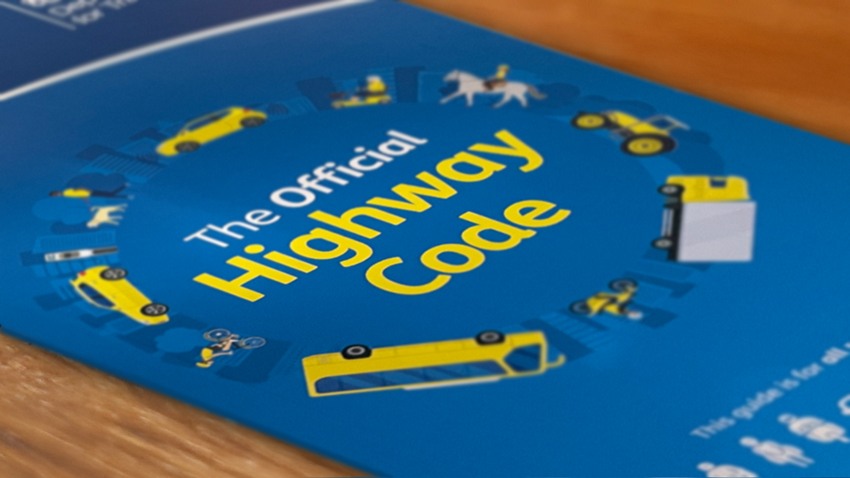
Every so often, we hear calls for certain groups of people to have to take, or retake, a driving test. Sometimes we are told that young people should have to take a follow-up test after a certain period; we are told that older people should have to retake the driving test, or a variant of it. We are told that this thing should be included in the test, or that this other thing should come out because it's archaic or irrelevant.
But what about those of us who have already passed our tests and are not of an age to worry about taking an age-related test or having to renew our licences due to age? How well do we even know the rules of the road?
Read the manual
For most of us, The Highway Code is a reference that we agonisingly pore over in preparation for the driving test and then probably never look at again, or even really think about. How many of you reading this (assuming anyone is) can honestly say you've looked at The Highway Code since you passed your driving test? So, it's not that much of a surprise to find that many of the Code's rules are either unknown, forgotten or frequently ignored.
If we drive responsibly, we tend to be in compliance with most of The Highway Code as much of it is just common sense. However, even the best drivers amongst us sometimes commit blatant contraventions of certain rules.
While The Highway Code is not, itself, the law, it does reflect various legislation and courts consider The Highway Code in evidence. In effect, it is considered an arbiter of acceptable driving practice. If, during court proceedings, you are found to be in breach of the Code, it is likely to be profoundly unhelpful to your situation.
Legislation informing or supporting The Highway Code includes:
- The Road Vehicles (Construction and Use) Regulations 1986
- The Road Vehicles Lighting Regulations 1989
- Road Traffic Act 1988
- The Traffic Signs Regulations and General Directions 2002
- Highway Act 1835
So, let's look at a few of the rules which, for one reason or another, are often overlooked in practice.
Commonly broken rules
Rule 57 Don't let your dog poke his head out of the window, no matter how much he loves it.
That's not actually the official heading for this rule, but it is the most obvious sign that it's being broken. The real gist of the rule is simply that dogs should be secured in the car to avoid distractions to the driver and injury to the dog or anyone else should the vehicle stop suddenly.
Rule 110 Flashing headlights.
Only flash your headlights to let other road users know that you are there. Do not flash your headlights to convey any other message or intimidate other road users. Don't do it to thank people; don't do it to let someone know you're giving way to them and definitely don't do it to warn people of speed traps.
Rule 123 Parking with the engine running.
You must not leave a parked vehicle unattended with the engine running or leave a vehicle engine running unnecessarily while that vehicle is stationary on a public road. This is to reduce emissions and noise pollution. It applies even if you're removing snow and ice - if you get out of the car, you must turn the engine off.
Rule 124 Speed limits when towing.
On single carriageways the limit is 50mph, on dual carriageways and motorways it is 60mph. So, 10mph slower than when not towing.
Rule 188 Drive around, not over, mini-roundabouts.
Your humble blogger must confess to being a serial offender here. In my defence, I was actually told by my driving instructor (in 1986) that I could just drive over the markings of a mini-roundabout instead of going right around them, and I have been proceeding under that misapprehension ever since. We live and learn. Researching this article may have saved me the cost of a fine.
Rule 248 Parking at night facing against the flow of traffic.
You MUST NOT park on a road at night facing against the direction of the traffic flow unless you park in a recognised parking space.
Rule 249 Lights when parking at night.
All vehicles MUST display parking lights when parked on a road or a lay-by on a road with a speed limit greater than 30 mph (48 km/h).
It's surprising how many of us don't know what parking lights are or how to turn them on. (Spoiler: it's the position on your light switch with the symbol that looks like two small lights, usually with three rays coming from each. Most people refer to that setting as "side lights", but that's your parking light setting.)
We have to admit that, out of six people asked here in the Regtransfers editorial office, only one knew what parking lights were.
Rule 264 Lane discipline on motorways - keep left!
Most of us probably know that we're only supposed to use the middle and right-hand lanes on a motorway for overtaking. Many of us also conveniently forget the fact as soon as we get onto the motorway. The instruction "Keep in the left lane unless overtaking" couldn't really be much clearer, could it? However, many people consider the middle lane to be their lane of choice and just default to that until the need to pass another vehicle.
Rather surprising rules
Some of the gems tucked away in the Code could be considered a little odd. That said, there are good reasons for all of them, although those reasons aren't always obvious.
Rule 58 Herds of animals at night should have front and rear lights.
Ok, so we may have deliberately worded that to make it sound more eccentric than it is. The fact remains that the Code says that if you're herding animals on the road at night, people should carry a white light at the front of the herd and a red light at the rear. It's just common sense to anyone who lives, or regularly drives, in rural areas.
Of course, this applies only to farm animals. Persuading a herd of wild deer to display front and rear lights really isn't going to happen.
Rule 148 No loud music or arguing.
Seriously, Rule 148 is concerned with the need to concentrate fully when driving. It lists a number of distractions or nuisances, including loud music and "arguing with your passengers or other road users". We probably all know someone who will find the latter difficult to comply with.
Rule 276 Rule 277 Additional rules for motorways (warning triangles).
Both these rules tell us not to display a warning triangle on motorways, even if you have broken down.
One reason for this surprising instruction is that the triangles could get knocked or blown onto the carriageway. Objects and debris in the path of fast moving traffic present a serious safety hazard, so this one isn't quite as baffling as it may seem on first reading.
Check it out
If you didn't know any of the above, or if you've been unknowingly breaking the rules, you may feel inclined to revisit The Highway Code and update your knowledge. What your driving instructor told you several decades ago may not still be true - if it ever was.
The Highway Code may be read online for free.
The Highway Code shown in the photo is Crown Copyright and licenced under Open Government Licence.
